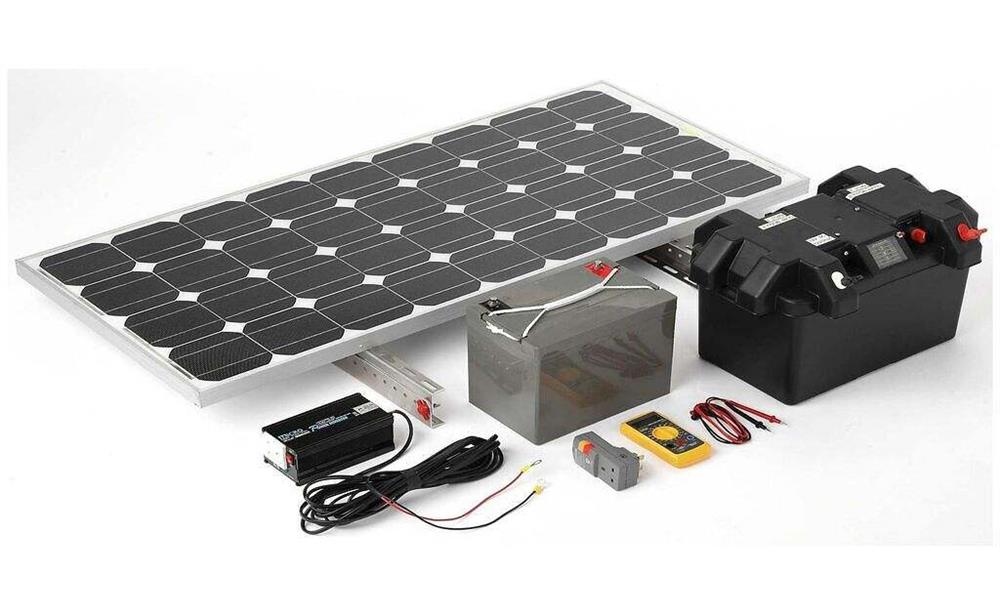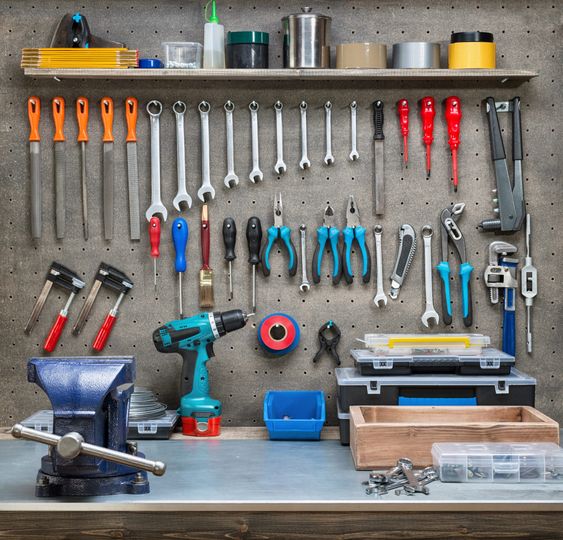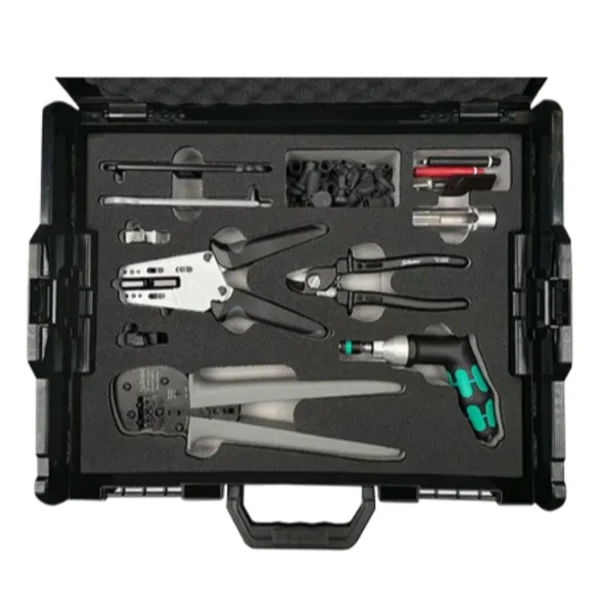Solar Tools You Need for DIY Installation - Ireland’s Complete DIY Tool Guide

Putting on your solar panels? That is a clever and cheap thing to do, but make sure you are doing this with the required tools! This guide details all the necessary solar tools to install on a DIY basis that would allow a homeowner to install safely and efficiently without calling in professional assistance.
How to Build Your Own DIY Solar Tool Kit on a Budget
Do not spend too much money on solar equipment. Assemble-yourself kit can be economical and include all the things necessary to have a safe, secure, and successful installation.
1. Start with Essential Manual Tools
Start the simple ones: wire strippers, screwdrivers, and spanners. They are required in nearly all installation procedures.
2. Add a Reliable Multimeter and Voltage Tester
The tools allow you to check the output and safeguard wiring to yield, as you evade the hazardous faults when handling live electricity.
3. Include an MC4 Crimping Tool for Solar Connectors
MC4 fittings are common in solar fittings. This tool gives strong and waterproof connections of wires.
4. Invest in a Budget-Friendly Cordless Drill
You will require a drill to fix the panels, brackets, and frames. Cordless is time-saving and suitable for the rooftops.
5. Don’t Forget Safety Tools
Throw in a pair of insulated gloves, a basic pair of safety glasses, and a harness in case the work happens at height, and safety equipment is not optional.
Essential Solar Tools Every DIY Installer Must Have - Start Here!
Before beginning any solar panel mounting procedure, it is necessary to prepare a working skillset. This chapter outlines 5 indispensable solar tools every DIY installer in Ireland should have available for safe, efficient, and lasting installations.
1. MC4 Crimping Tool
It has been purposely developed for terminating MC4 connectors attached to solar PV cables, which are the standard in all modern solar systems. This tool will ensure that a tight, waterproof, and electrically solid connection between the solar panels and junction boxes will be secured.
2. Digital Multimeter
A multimeter is imperative for measuring voltages, currents, and resistances prevailing at any point of the system. With such an instrument, the installer can check the solar panel output, locate faults, and make safe electrical connections during the installation.
3. Wire Stripper & Cutter
These tools are used to strip insulation off the solar cables and to cut wires to desired lengths. They are very important for protecting the wires against damage, poor conductivity, and short circuits when installing wiring.
4. Cordless Drill (with Metal Bits)
Real work needs to be done when mounting rails and brackets on tile, timber, or metallic rooftops; hence, these require a heavy-duty cordless drill. It makes sense to select one with variable speed matching high torque for optimum use in overhead or tight working environments.
5. High-Voltage Insulated Gloves
These gloves are rated for electrical tasks and keep your hands from harm when working with live DC wiring. They also help grip when using tools on sloping or slippery surfaces.

The Ultimate Solar Panel Tool Checklist for Homeowners
With all the proper tools in place, work will be quicker, and mistakes will be minimized and, above all, DIY solar installation will be a lot safer
1. Mounting Tools for Securing Panels
They can fasten brackets, rails, and modules on the roof using tools such as socket wrenches, ratchet screwdrivers.
2. Electrical Tools for Safe Wiring
Connecting, testing, and securing electrical circuits require wire cutters, stripping and a multimeter.
3. Personal Protective Gear for Roof Access
Companion equipment should include harness, ladder brake, gloves, and helmet - these things ensure your safety when working on roofs or above-ground positions.
4. Optional But Useful Extras
An efficiency and long-term performance can be boosted by one label printer, cabling management clips, and a solar panel cleaning brush.
Don’t Start Without These Safety Tools for DIY Solar Work
DIY solar installation entails dirty electricity as well as heights, no special safety equipment, and a minor error can turn into a major one.
1. Insulated Gloves for Electrical Protection
They will prevent shock to your hands when dealing with live wires or terminals when testing and connecting.
2. Voltage Tester or Multimeter
This tool is necessary because it tests to make sure that there is no live current flowing before touching any of the wires, as this is vital towards personal safety.
3. Roof Harness and Ladder Safety System
It can be deadly to fall through the roof, but harnesses, lanyards, and ladder stabilizers make sure that you are safe when you are high up.
4. Non-Conductive Footwear and Dry Work Area
The rubber soles of boots avoid accidents as a result of grounding and keep your working floor drier at all times to prevent accidents as a result of falling or shock.
Power Tools vs. Manual Tools – What Works Best for Solar Panels?
Following these steps to help for the best work for solar panels.
1. Manual Tools: Affordable and Reliable
Manual screwdrivers, spanners, and cutters are economical and provide greater control in fine tuning and details.
2. Power Tools: Speed and Efficiency Boosters
Impact drivers and cordless drills accelerate the process of mounting and eliminate fatigue, which is also helpful when fixing the rooftop or big setups.
3. When Manual Tools Are Better
Use them where there is little clearance, where there is where wires need to be laid safely, and when making adjustments, where it would be possible to destroy the parts by excessive torque or over-drilling.
4. When Power Tools Are Essential
Power tools are marvelous in mounting brackets to tile or concrete roofs or drilling through heavy materials, because they save both time and energy.
5. Best Practice: Use a Mix of Both
Hybrid strategy provides flexibility, accuracy, and efficiency to you as manual when precision is needed and power when you need to use it in heavy-duty work.
Best All-in-One Solar Tool Kits for Hassle-Free Installation
All-in-one sets are suitable for novices, since they will provide you with the majority of the required accessories in a single package.
1. What’s Included in a Standard Solar Tool Kit?
Such kits generally include MC4 crimpers, wire strippers, a multimeter, screwdrivers, gloves, and occasionally a tester or a carrying case.
2. Who Should Buy a Pre-Built Solar Tool Kit?
These are ideal not only as a first DIY toolkit but also in houses where homeowners are undertaking small installations or anyone who does not want to assemble concrete equipment one by one.
3. Tips for Choosing the Right Solar Kit
Check if they are CE certified, learn about the quality of tools and what other tools are included, and verify user feedback to avoid buying poorly or incompletely set.

Are Solar Installation Tools Easy to Use for First-Timers?
Yes, the majority of tools can be applied by the beginner when used carefully.
Quick learning tips:
-
Take a glance at short YouTube demos before utilizing new tools
-
Read the manual of the manufacturer
-
Ground test equipment, then roof test equipment
Proper use of tools enhances effectiveness and eliminates error.
How to Use Solar Tools Correctly and Safely - Expert Tips!
Even with the right tools, misuse could lead you to wrong outputs, disaster, injuries, etc. Read these tips to avoid that experience from experts.
1. Test Before You Touch
Never, ever presume a wire is dead; use a multimeter or voltage tester before dealing with any wires.
2. Follow Manufacturer Instructions Closely
Read a manual before using because all tools have unique torque settings, connector types, or voltage limits.
3. Label Your Connections Clearly
Label cables and junctions as you wire so future testing or maintenance won't confuse them.
4. Avoid Working in Wet or Windy Conditions
In moisture, you will be more susceptible to electric shocks. During high winds, working on rooftops can also be dangerous.
Best Buyer Solar Tools for DIY Projects in Ireland
Finding the right tools is just as important as using them correctly.
Midwest.ie is a trusted provider of cheap gear for home solar installers. Besides, remember to check for specifications of the product, modes of delivery, and safety ratings before you buy.
FAQ’s
Q1.What’s the most important tool for DIY solar installation?
Multimeters enable you to check the panel's voltage, continuity, and performance.
Q2.Can I install solar panels without power tools?
Technically, drill and drivers are power tools, but easy comparison ends there. The task becomes expeditious and efficient rather than doing it with manual effort.
Q3.Do I need safety gear even for ground-mounted panels?
Of course, you are working with electricity, sharp tools, and heavy parts.
Q4.What’s an MC4 connector, and do I need a tool for it?
This is indeed the common solar wire connector. A crimping tool is needed to secure the wires together.
Q5.Are solar tools reusable for future projects?
Most tools last for many years and are often inherited for future upgrades or installations.
Conclusion
You need to prepare and organize yourself before going on DIY solar installations. Save money while giving an added joy to installing an arrangement by yourself. Provision gets you avoiding waste bits and the guaranteed performance of solar in the long run. Success rests on the safety, accuracy, and quality of the tools. Now you can proudly install power into your house with the right tools to do the needed installations.





